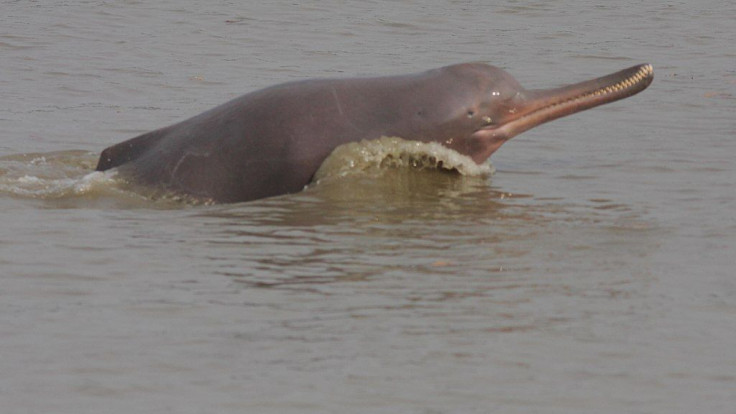Fisherman Saves Endangered River Dolphin Accidentally Caught In Net
KEY POINTS
- A fisherman in India saved an endangered dolphin that got caught in his net
- He reportedly carried the dolphin away from the nets and returned it to the water
- From tens of thousands, Ganges river dolphin numbers have dropped to below 2,000
A fisherman in India who accidentally captured an endangered dolphin in his net carried it back into the water to set it free. In the last century, Ganges river dolphin numbers have dropped from tens of thousands to just less than 2,000.
A Ganges river dolphin accidentally got entangled in the net of a fisherman in Purnia, situated in eastern India, on Friday (July 3). According to Fox News, it is believed that the dolphin had strayed into the Parmaan River from the Ganges.
Villagers reportedly gathered in the area to see the dolphin and witnessed the fisherman carry the creature away from the nets and release it back into the water.
What's interesting about Ganges river dolphins, apart from the fact that they are generally blind and rely primarily on echolocation, is that they are believed to be some of the very first river dolphins. The Ganges river dolphin is also the only member of its genus and the Plantanistidae family.
However, they are already listed as endangered by the International Union for the Conservation of Nature (IUCN), meaning that the species is seriously at risk of extinction.
They are threatened primarily by the damming of rivers, which significantly alters their habitat and stops them from their seasonal migration. This prevents them from traveling long distances and even makes them susceptible to inbreeding.
Pollution, direct killing, and overfishing also caused their numbers to plunge in the last century. Today, despite the high level of protection for the species, WWF India estimates that there are only about 1,200 to 1,800 Ganges river dolphins left.
In fact, they are now considered extinct in most of their original distribution areas.
Just last May, fears of poaching the Ganges river dolphins were sparked by the discovery of a dolphin carcass in a river sanctuary in Bangladesh. It was sliced from neck to tail and had its body fats removed.
At the time, locals reportedly began illegally fishing in the area since the local officials who usually patrol the region were busy enforcing the coronavirus lockdown.
Typically, Ganges river dolphins are killed for their fats and oils, which many locals believe to be traditional cures for various diseases. Although it is also illegal to kill the creatures in Bangladesh, they are still easy targets for poachers.

© Copyright IBTimes 2024. All rights reserved.












